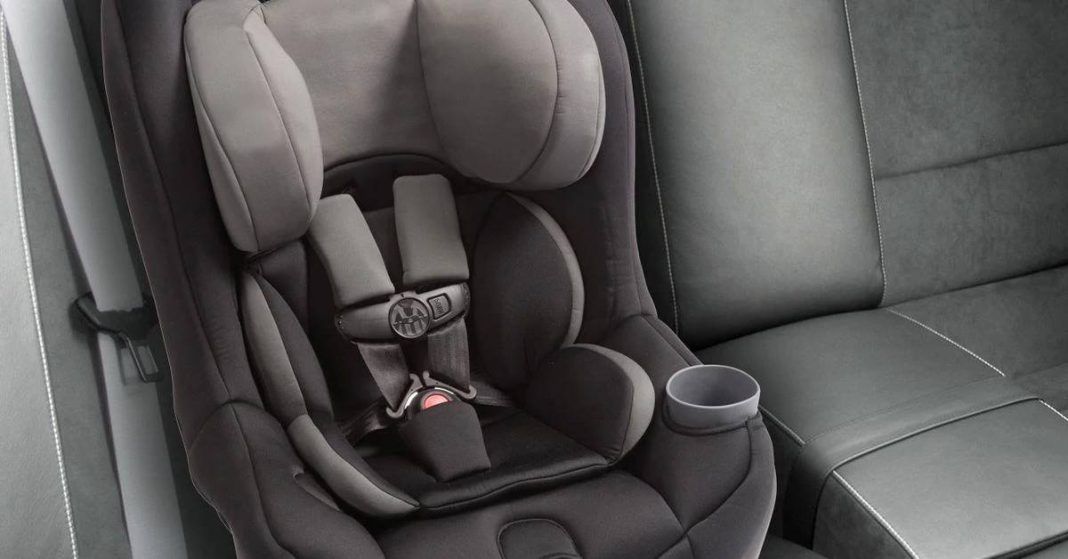UPDATED SEPTEMBER 1, 2021 This piece has been updated to reflect the emergence of new technology.


Christian Mathews Security Writer
We all know that food has an expiry date, so does medicine. Have you wondered why a non-perishable item, such as a car seat, comes with an expiration date? While it may seem like a marketing gimmick, there are legitimate reasons a car seat needs to have an expiry date. Not many people realise that a car seat also expires.
Knowing the reasons and understanding why, will make sure you always get the safest car seats for your baby. The two major reasons that a car seat should have an expiry date is safety and standards.
Ensuring child safety and comfort is the primary reason that anyone would want to use a car seat. As with any mechanical parts, the plastic and webbing found in the car seats are bound to wear and tear after some time. They are also exposed to a stressful environment inside the car, which, over time, degrades the materials and compromises the safety of the seat.
The other major reason why safety regulations insist on a car seat expiration date is that car seat technology is continuously evolving. The safety measures that your seat has now could be vastly improved upon in a matter of just a few months. Expiry dates ensure that you always get a new seat that adheres to the latest technologies, standards, and advancements to overcome any previous design or safety flaws.
Besides expiry dates and design updates there are also other considerations to take into account when thinking of the safety of your car booster seat:
- Knowing at what age a child can use a booster seat.
- Knowing how old your child should be before they can leave their rear facing seat.
- Knowing which car seat for your 3 year old is best.
In this article we look at a quick summary of why car seats expire, and all the factors you need to consider to ensure the safety of your kids.
1Why Do Car Seats Expire
Design Updates
Car seat manufacturers periodically update the design to improve the performance and quality of the seats. While an older car seat might look to be in pristine condition, it will not measure up to the quality and safety of the newer models. There are different high back booster seat requirements, along with conventional baby car sets.
Standards Update
Safety regulations evolve to provide the best possible guidelines for families using car seats. Expiration dates can ensure that the product you use is always in compliance with the latest safety guidelines and standards.
Damage To The Product
The absence of explicit signs of wear and tear, does not mean there is no degradation of materials. This is especially true, if it is nearing its expiration date. The strength and quality of the safety straps, webbing and the overall quality of the seat will decline over time.
The plastic in the seat is known to become brittle over time. This is due to the various fluctuating temperatures inside a car. But not all of these changes and damage can be visible to the eyes. This is why an expiration date gives a good indication of the quality of the seat.
2When Do Car Seats Expire
The general recommended usage period for a car seat is 6 years. In most cases car seats come with a lifetime of up to 10 years, depending on the quality of the materials used.
The manufacturer normally decides the lifetime of a car seat as they know well what materials were used in producing it. The steel frames and metal parts usually have a higher shelf life compared to the plastic parts.
If the car seat has ever been in an accident, it can become useless despite having a later expiration date. So if you are purchasing a second-hand seat, make sure to get the full product history. As a general rule, a car seat that’s been through a car crash should not be used.
3How Do Car Seats Expire


All car seats will come with a sticker or a marking that mentions the date of manufacture.
- Some manufacturers may also explicitly mention the expiration date on the seat. You can normally find this sticker along the sides or back of the seat.
- If an expiration date is not mentioned on the car seat, you can assume it to be six years from the date of manufacture.
- Certain car seats start the expiration clock from the date of purchase, but the recommended method is the date of manufacture.
4When to switch car seats:
As your child grows you will need to adjust the size of the car seat you use as well.
The first seat your child will need is an infant car seat. When your child reaches the height and weight limit suggested on the seat or their heads are within 1” of the top of the seat, it is time for a larger seat. The next seat size up you will need is the toddler size car seat. Once your child outgrows this size they will transition to the last size which is the booster seat.
5What To Do When Your Car Seat Expires
Expired car seats should not be further used or resold, it should be disposed of in the proper way. Some further recommendations include:
- You can recycle the parts or dispose of the seat in a proper way.
- Safety guidelines recommended cutting off the webbing, harness straps and removing the padding, so the seat becomes unusable. Do not ever sell or donate an expired car seat to a friend or a charity as these must be put out of circulation.
- You can make use of car seat recycling programs available to help deal with an expired seat. There are several resources like recycleyourcarseat.com and other state-run recycling programs that can help you locate the recycling centers near your home.
- Certain retailers will exchange expired seats for other types of baby gears and help you recycle used car seats.
6The Downside To Purchasing A Second-Hand Car Seat
The biggest downside to purchasing a second-hand car seat is that it will have a reduced lifetime. You may have to find a replacement once you get near its expiration date.
While it may not be explicitly visible, used car seats might have missing or worn out parts. It’s quality will be much lower than that of a newer seat.
You also stand the risk of buying a product without complete information on its product history. Any changes, repairs, or damage to the car seat could compromise its safety. Manufacturers assure a new car seat’s integrity, which can be difficult to obtain from a second-hand purchase.
A second-hand seat may also lack the advanced features and design corrections available in a new model.
Buying from a manufacturer and registering your car seats can help you stay updated on any changes in safety standards and recalls. This can also be quite difficult to do with a second-hand purchase.
7Key Takeaways
- Always pay attention to the Expiry date on the car seat.
- Make sure you adjust the size of your car seat as your child grows.
- Never use a car seat that is expired.
- Dispose of your expired car seat in a responsible manner.

















































